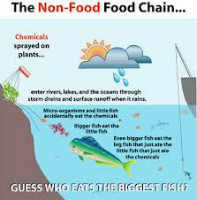The Wok is a popular cooking tool that has been around for
thousands of years, originating in the Canton district of China. It was formed with
a rounded bottom that recessed into a traditional pit style stove with the heat
being directed at the bottom. Widely used in Asia it has now spread throughout
the world.
Part of the reason for its popularity is because it is so
versatile and can be used for steaming, boiling, braising, searing, roasting, stir
frying, and deep frying. It is also inexpensive, easy to use and almost
indestructible.
indestructible.
 The traditional wok is made of carbon steel and has a rounded bottom, but is also available with a flat bottom for use with electric stoves. It comes with either riveted or welded loop handles, a single stick handle, or a combination of the two. The bowls come in a variety of diameters from as small as 11 inches up to 24 inches or more. A standard size for most households would be 14 inches because this size fits neatly over the gas ring or electric coil of most stoves.
The traditional wok is made of carbon steel and has a rounded bottom, but is also available with a flat bottom for use with electric stoves. It comes with either riveted or welded loop handles, a single stick handle, or a combination of the two. The bowls come in a variety of diameters from as small as 11 inches up to 24 inches or more. A standard size for most households would be 14 inches because this size fits neatly over the gas ring or electric coil of most stoves.Remember that the correct cooking temperature will affect the taste and quality of the food and so it is important to make sure that your stove can deliver sufficient heat concentration at the base of the wok. For this reason gas stoves are generally preferred and by placing a ‘wok ring’ over the burner the wok is cradled and held securely over the heat.
The depth of the wok is also an important consideration because this determines the capacity of food that can be cooked at any one time.
The shape of the wok allows oil to pool at the base where it
is hottest leaving the cooler sloping sides available to move food to for
longer cooking time.
When purchasing a carbon steel wok it is necessary to season
the surface to prevent food sticking to it. To season a wok it is good practice
to do it in a well ventilated area away from any combustible material. Heat the
wok until the entire surface is hot, then add at least a teaspoon of an oil
with a high smoke point and spread the oil evenly over the inside surface using
a cloth or paper towel. The idea is to get the wok hot enough so that the light
coating of oil begins to smoke and gradually darkens the metal surface. Allow
the wok to cool to room temperature, wipe off any excess oil and repeat the
process again. The wok may need to be treated like this three or four times
before it is ready for use.
Once seasoned properly the metal surface will be darker and
take on a slightly glossy oily appearance and be tacky to the touch. There should
be no more trouble with sticking food, but in order to maintain the seasoning
it should not be washed in
soapy water. Instead rinse the wok in warm water and allow to air dry. A bamboo
brush can be used to remove any food particles that resist rinsing. The high
temperature used during cooking creates a sterile utensil so there is no need
to be concerned about cleaning the wok in the normal manner, a light brushing
and rinsing should be sufficient. When using a wok to steam or stew, it is a
good idea to buy an additional wok strictly for this purpose and avoid the need
for repeatedly re-seasoning.
You are also going to need some tools to go with your wok. A
lid is a key component, which is usually made of aluminum, but is necessary to
retain heat when steaming etc, so always get a wok with a lid. Then you will
want to have a spatula, a ladle and a strainer. These tools are essential for
stir frying, mixing and deep frying. Try to get stainless steel as these are
stronger, longer lasting and clean up well. We have already suggested a bamboo
brush for cleaning, but another tool which would be useful is a Chinese cleaver,
which is ideal for chopping, crushing garlic, slicing and peeling.
Now you’re ready to start cooking. Stir frying is a fairly
straight forward and simple process that only requires a little practice to
become proficient at. It is a good idea to prepare the food ahead of time
because the actual cooking process is quite short. Start by adding a tablespoon
of oil to the wok heating it over a gas burner or electric element to get it
nice and hot. Add garlic and onions to begin with, stirring and moving the food
around using the spatula and strainer until they are nicely browned. Follow with your vegetables of choice remembering to maintain a
high temperature to sear the food and seal in the flavor. Finally add any
flavorings and condiments to the mix before serving.
Bon appetit!

























































